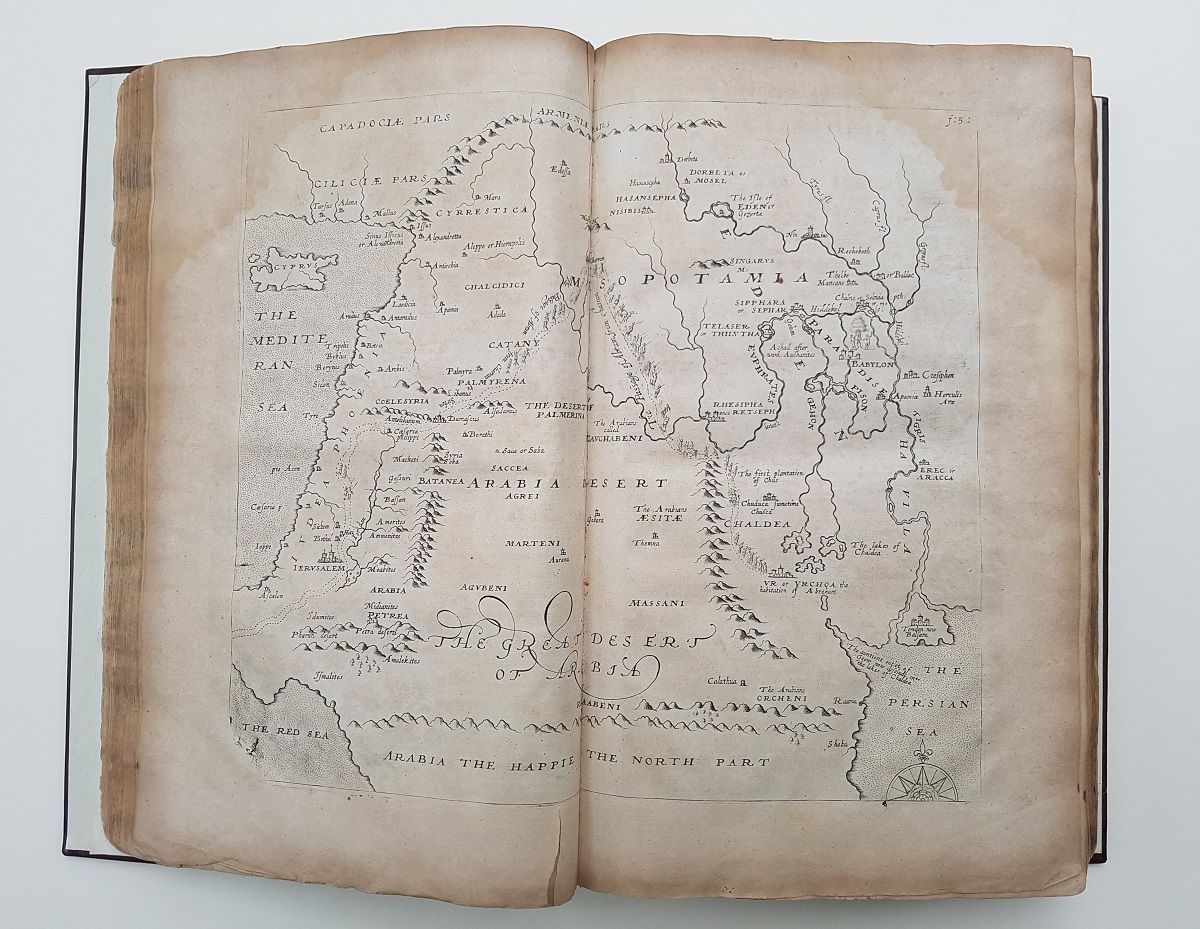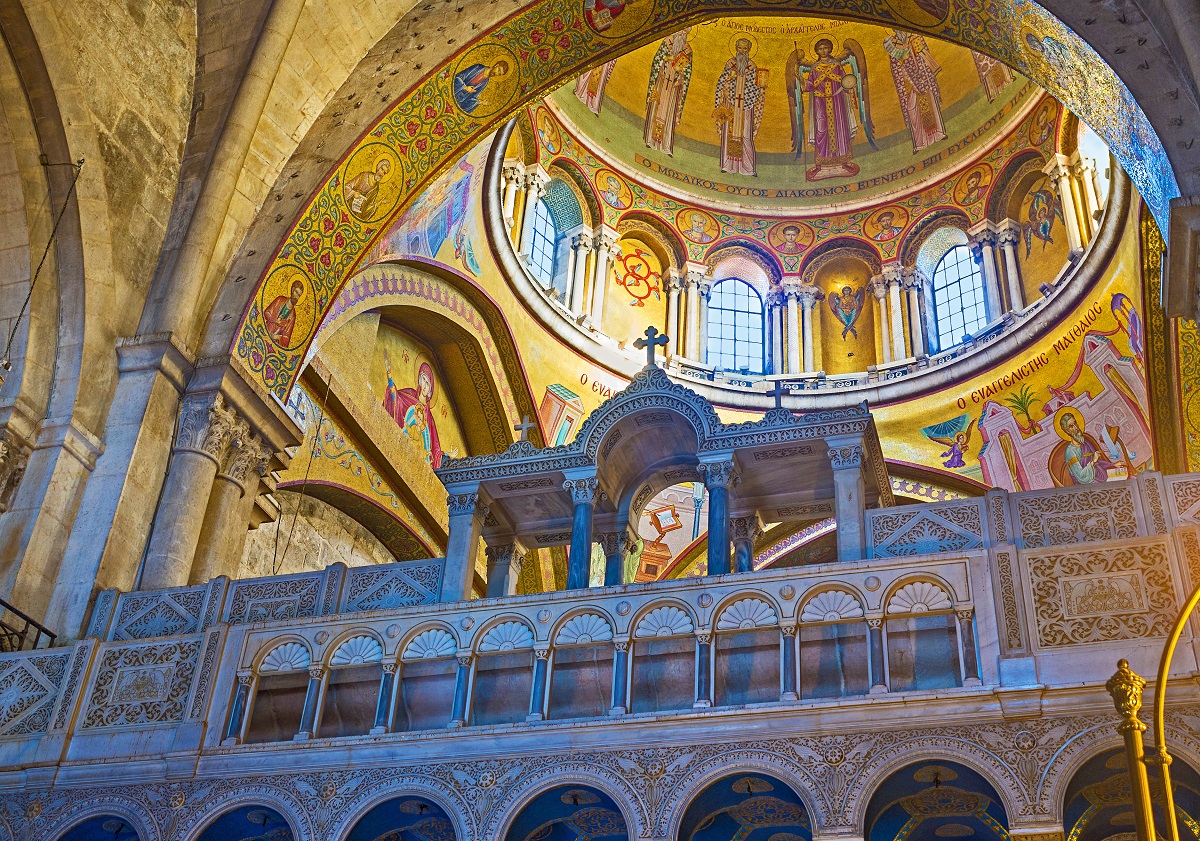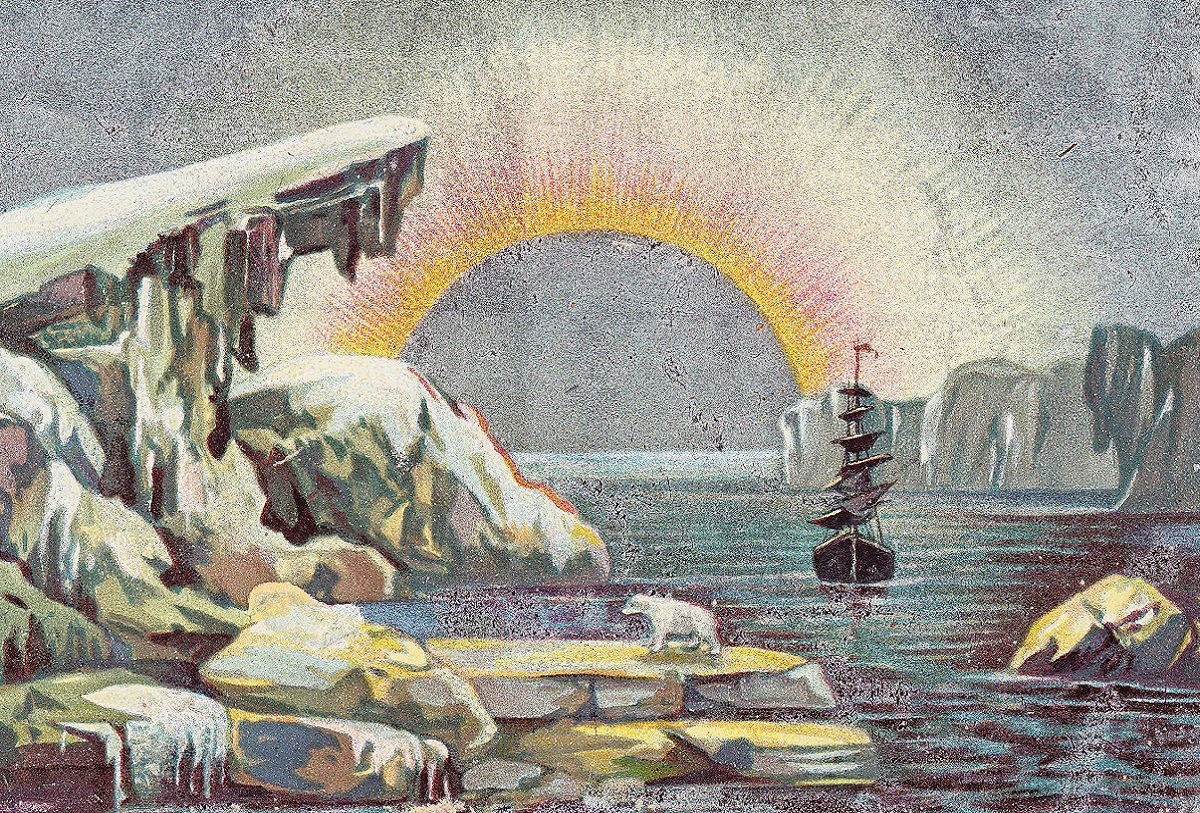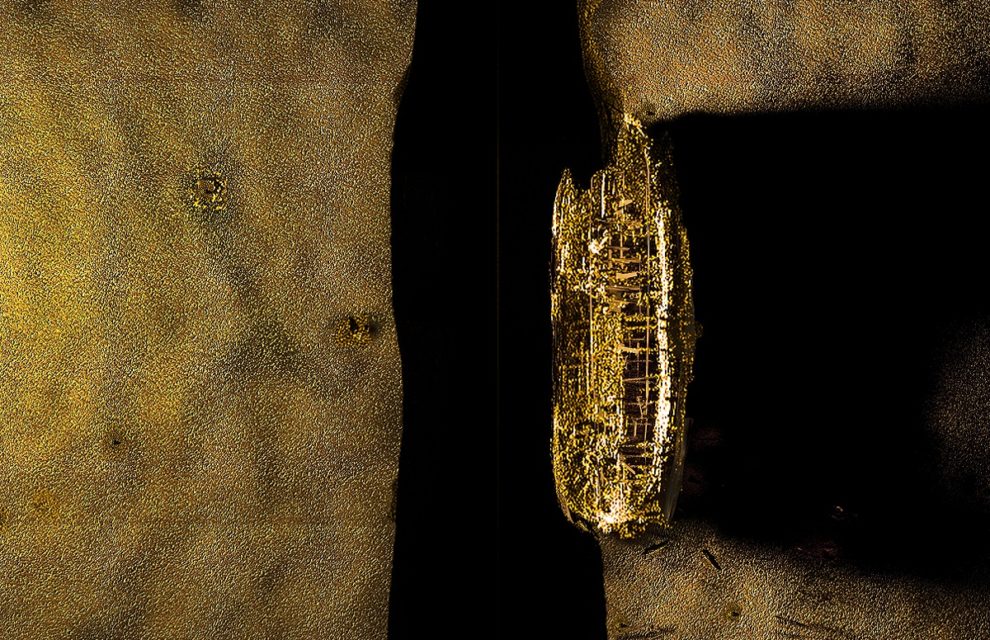What mythical places are worth dying for – or even worth killing for?
The illustration at the top of this blog shows the wreck of HMS Erebus, one of Sir John Franklin’s ships, at the bottom of the Northwest Passage. The Erebus and the Terror were discovered recently. All 129 members of Franklin’s lost expedition in the 1840s died miserable deaths from starvation, scurvy, hypothermia etc. Theirs was a failed quest.
As I near completion of The Blinding Sea, my feature film on polar exploration, I realize Roald Amundsen mounted the Northwest Passage expedition on the Gjoa in 1903-1906 partly to show it could be done, partly as a contribution to geographical and scientific knowledge, and partly as a way of passing through a kind of glass wall – entering a new reality on the other side of myth. But in this, he was not alone. Many people crave mythical places.

The search for Earthly Paradise motivated many explorers over the centuries. According to the Book of Genesis, Adam and Eve lived there in perfect harmony, innocence and delight, but their first sins resulted in God expelling them into a world of toil, thorns, thistles and death. As an idealized place, the Garden of Eden only has meaning when contrasted with desolation. It is the myth of a desert people.

I remember visiting a desert oasis in Tirjit, Mauritania, deep in the Sahara – something like a Garden of Eden. Here in the midst of featureless sand dunes and outcroppings of rock is abundant water pouring down a limestone cliff, and collecting in a pool surrounded by palm trees, that reflects the deep blue of the day-sky and the astonishing star-filled night-sky of the Sahara. The oasis seems like a miracle in the middle of so much desolation. Another time I visited the oasis of Azraq in the middle of a stony desert in eastern Jordan, and had much the same impression.
Atlantis is a mythical place, mentioned by Plato in the Timaeus:
“For it is related in our records how once upon a time your State stayed the course of a mighty host, which, starting from a distant point in the Atlantic ocean, was insolently advancing to attack the whole of Europe, and Asia to boot. For the ocean there was at that time navigable; for in front of the mouth which you Greeks call, as you say, ‘the pillars of Heracles,’ there lay an island which was larger than Libya and Asia together; and it was possible for the travelers of that time to cross from it to the other islands, and from the islands to the whole of the continent over against them which encompasses that veritable ocean. For all that we have here, lying within the mouth of which we speak, is evidently a haven having a narrow entrance; but that yonder is a real ocean, and the land surrounding it may most rightly be called, in the fullest and truest sense, a continent. Now in this island of Atlantis there existed a confederation of kings, of great and marvelous power, which held sway over all the island, and over many other islands also and parts of the continent.”

Plato then adds in the Critias:
“But afterwards there occurred violent earthquakes and floods; and in a single day and night of misfortune all your warlike men in a body sank into the earth, and the island of Atlantis in like manner disappeared in the depths of the sea. For which reason the sea in those parts is impassable and impenetrable, because there is a shoal of mud in the way; and this was caused by the subsidence of the island.”
Many Utopias and other Lost Worlds are based on the myth of Atlantis.

The Holy Sepulchre in Jerusalem is certainly a mythical place, for tradition holds this is where Christ was buried. I have been to Jerusalem several times, and each time I have seen the Church of the Holy Sepulchre as a place worth visiting, despite all the hustle and bustle of Christian communities within its walls, vying to out-do each other. However, it is not a place likely to bring serenity to the soul. On the contrary, it is a place revealing all the pent-up contradictions and conflicts of human society. Some people have been crushed to death by stampeding pilgrims here. The desire to control the Holy Sepulchre (i.e. the desire to control the holiest site of Christendom as well as the narrative of Christ’s death and resurrection) led to the Crusades, establishment of the Latin Kingdom of Jerusalem, and many other wars besides. For many people, the Holy Sepulchre was a place worth dying for – and worth killing for.

In 1618, the English explorer, soldier, spy, courtier, poet and myth-maker Sir Walter Raleigh wrote History of the World, while awaiting execution in the Tower of London. In this work, he pinpoints what he believes to be the location of Earthly Paradise (in modern-day Iraq). Raleigh was sentenced to death because of his craving for mythical places and the wealth supposedly to be found there. His capital crime was to have ransacked a Spanish fort in South America during his second failed quest for El Dorado, the legendary City of Gold (which doesn’t actually exist). The ransacking violated his royal pardon after his previous failed quest, as well as the 1604 treaty of peace between Spain and England.


